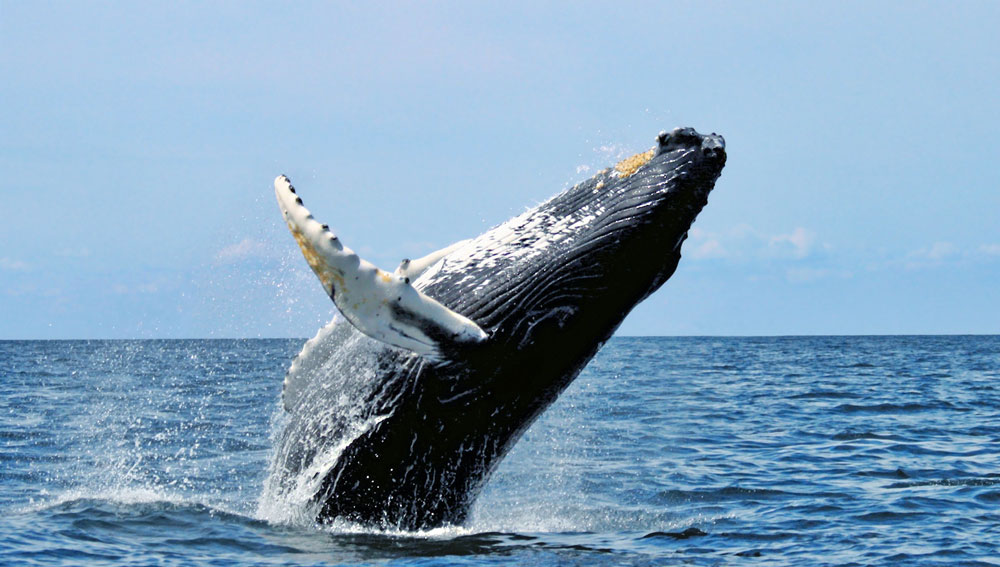KidZone Animals
Whales: Common Behaviour
Breaching

Photographer, Whit Welles; saturated and used with permission under CC BY-SA 3.0
The most common whale to breach is the humpback whale. Breaching is quite a mysterious act. It occurs when a whale propels its body out of the water in an acrobatic-like movement, then splashes back into the water, often landing on its back.

Photographer, Merill Gosho; used with permission under the Public Domain
Most scientists speculate that breaching occurs as a result of a whale attempting to get barnacles off its body - the younger calves (baby whales) will mimic the adults, playing and learning (sound familiar?). Most commonly, whales breach half of their bodies out of the water. However, breaches can consist of full body exits, as well!
Blowing

"Southern Right whale blowing"; used with permission under CC BY-NC-ND 2.0
Blowing occurs when a whale comes up to the surface of the water to let its air out (exhales) and back in again (inhales). This is obviously a common occurence as whales are mammals that need to breath oxygen. Thus, what comes out of a whale's blowhole is a mixture of hydrogen and oxygen and mucus (ew)! When ready to descend back under the water, the whale closes its blowhole tightly to prevent water from entering.
Fluking

Photographer, Alan Vernon; used with permission under CC BY-NC-SA 2.0
The purpose of fluking is for deep-sea diving. All whales, especially large baleen whales, fluke. A whale will thrust its tail out of the water in order to gain more momentum for deep dives - much like the way in which a human thrusts his or her feet out of the water in order to dive to the bottom of a swimming pool! For humans, these dives can only last a few minutes (if that), but for whales, deep sea dives usually last up to 30 minutes (90 minutes for Sperm whales, who are the longest-time diving whales).
Spyhopping
Spyhopping is an intriguing behavior where a whale vertically rises out of the water, often keeping its head above the surface for several seconds before descending again. This behavior allows the whale to get a better view of its surroundings above the water, much like a periscope. Whales may spyhop to look for prey, navigate, or observe other whales and human activities. This behavior is commonly observed in orcas and humpback whales. Spyhopping provides a fascinating glimpse into the curiosity and intelligence of these magnificent marine mammals.